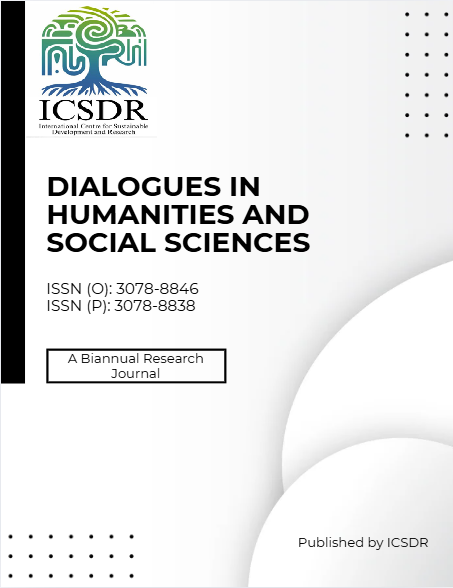The Urbanization of Parachinar: A Qualitative Analysis of Sociopolitical Impacts on Local Population
Keywords:
Urbanization, social contract, political mobilization, local government, Tehsil Municipal Administration (TMAs)Abstract
Urbanization has adverse effects on resource distribution, which leads to limited access to health, employment, education, housing, and other services of human lives. The current study will specifically investigate the drastic impacts of urbanization on the sociopolitical aspects of the population. The independent factors of the study include the effects of rising trash, social contact, access to health and educational resources, political mobilization, shifts in the political system, and the increased participation of women in politics as a result of urbanization. A qualitative research approach was adopted with semi-structured interviews and open-ended questions. The purposive sampling technique was utilized for sampling and the data was collected from twenty samples. The sample size comprises TMA officials, city administrative persons, the mayor of the city, political figures, and common people. The obtained data was then analyzed through thematic analysis. Parachinar's rapid urbanization strains infrastructure and resources but increases tolerance and workforce participation. However, political participation faces challenges due to inadequate voting systems and a diverse population. Parachinar's rapid urbanization demands sustainable development, addressing infrastructure, waste, and community spaces. Expediting CNIC issuance, voter registration, and education can boost political participation in Kurram.
Downloads
Published
Issue
Section
License
Copyright (c) 2024 Dialouges in Humanities and Social Sciences

This work is licensed under a Creative Commons Attribution-NonCommercial 4.0 International License.
DHSS is licensed under a Creative Commons Attribution-NonCommercial 4.0 International license (CC BY-NC 4.0). This license permits users to use, reproduce, disseminate, or display the article provided that the authors are the original creators and that the reuse is restricted to non-commercial purposes, i.e., is attributed to research or educational use, provided that the work is properly cited.

